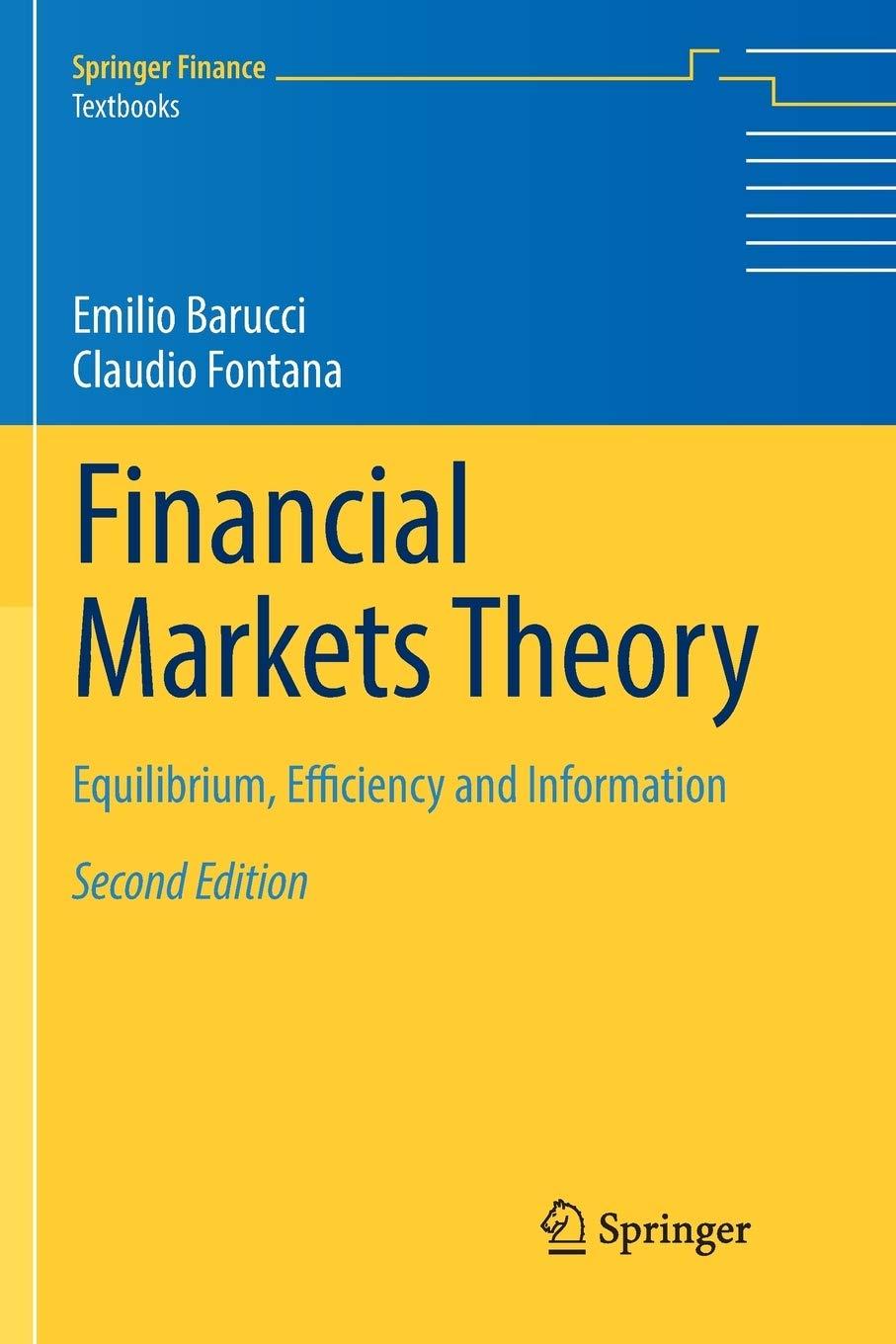Consider the model proposed by Kyle [1147] and described in Sect. 10.2. (i) Suppose that the functions
Question:
Consider the model proposed by Kyle [1147] and described in Sect. 10.2.
(i) Suppose that the functions \(X\) and \(P\) are linear:
\[X(\tilde{d})=\alpha+\beta \tilde{d} \quad \text { and } \quad P(\tilde{x}+\tilde{z})=\mu+\lambda(\tilde{x}+\tilde{z})\]
for some constants \(\alpha, \beta, \mu\) and \(\lambda\) to be determined. Show that the profit maximization constraint (10.10) implies that
\[\beta=\frac{1}{2 \lambda} \quad \text { and } \quad \alpha=-\mu \beta\]
(ii) By relying on the result obtained in the first step, prove that the market efficiency condition (10.11) implies that
\[\lambda=\frac{\beta \sigma_{d}^{2}}{\beta^{2} \sigma_{d}^{2}+\sigma_{z}^{2}} \quad \text { and } \quad \mu-\bar{d}=-\lambda(\alpha+\beta \bar{d})\]
Deduce that Proposition 10.3 holds.
Step by Step Answer:

Financial Markets Theory Equilibrium Efficiency And Information
ISBN: 9781447174042
2nd Edition
Authors: Emilio Barucci, Claudio Fontana





